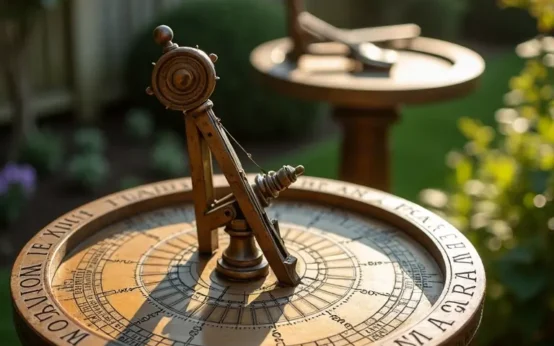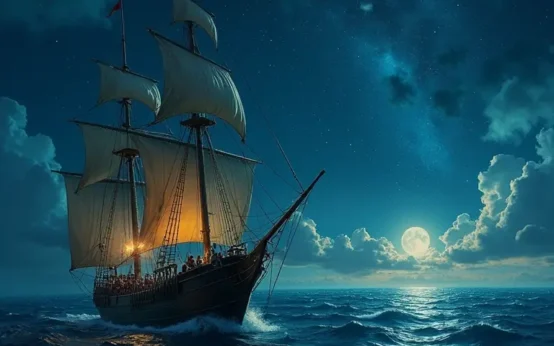For millennia, humans have looked to the stars not just for wonder, but for direction. Before GPS, radio beacons, and even accurate maps, our ancestors navigated vast oceans and unforgiving landscapes using only the sun, moon, planets, and, most importantly, the stars. This isn’t a tale of mystical stargazing; it’s a story of meticulous observation, complex mathematics, and a profound understanding of our place in the cosmos. Welcome to the curious chronicle of celestial navigation – a journey through the history, science, and enduring artistry of finding your way by the heavens.
The Dawn of Direction: Early Methods
The earliest forms of navigation were, unsurprisingly, tied to the sun. Observing the sun’s rising and setting points, and the length of its shadow, allowed early civilizations to establish cardinal directions – North, South, East, and West. Simple, but effective for land-based travel. However, for venturing beyond sight of land, a more sophisticated system was needed.
Around the 3rd millennium BCE, the Egyptians began using circumpolar stars – stars that appear to circle the celestial pole – to maintain direction. By observing which star crossed the meridian (an imaginary line running North-South) at a specific time, they could establish a fixed point of reference. This was crucial for aligning structures like the pyramids with remarkable accuracy.
The Polynesians, renowned for their incredible seafaring abilities, developed an even more nuanced understanding of the stars. They weren’t simply using stars for direction; they were creating ‘star compasses’ – mental maps of the night sky, coupled with a deep knowledge of wave patterns, bird flight paths, and cloud formations. Their oral traditions passed down generations of navigational expertise, enabling them to colonize islands across the vast Pacific Ocean without relying on written records or instruments. This art form is truly astonishing, showcasing a deep, symbiotic relationship with the natural world. For more on incredible feats of ingenuity from the past, consider exploring the world of antique automata and their complex mechanics.
The Greeks and the Birth of Mathematical Astronomy
The ancient Greeks took celestial navigation to a new level by applying mathematical principles. Figures like Hipparchus (2nd century BCE) and Ptolemy (2nd century CE) meticulously cataloged stars, measured their positions, and developed models of the cosmos. Ptolemy’s Almagest, a comprehensive astronomical treatise, became the standard reference for over 1400 years.
Greek astronomers understood that the Earth was a sphere and that the stars appeared to move due to the Earth’s rotation. They developed the concept of latitude – the angular distance north or south of the equator – and recognized its importance for determining position. However, longitude – the angular distance east or west of the Prime Meridian – proved far more challenging. Accurately determining longitude required a precise understanding of time, something that wasn’t possible until the invention of accurate clocks.
The Arab Contribution: Refinement and Innovation
During the Islamic Golden Age (8th – 13th centuries CE), Arab scholars preserved and expanded upon Greek astronomical knowledge. They built observatories, refined astronomical instruments, and made significant contributions to trigonometry – a crucial branch of mathematics for celestial navigation. They also improved the astrolabe, a versatile instrument used for determining the time, latitude, and the positions of stars and planets. The astrolabe, while complex, allowed sailors to estimate their position based on the altitude of the sun or a known star.

The Age of Exploration and the Quest for Longitude
The Age of Exploration (15th – 17th centuries CE) dramatically increased the demand for accurate navigation. European explorers sought new trade routes, charted unknown coastlines, and circumnavigated the globe. The ability to determine longitude accurately became paramount for safe and efficient seafaring.
Early attempts to solve the longitude problem involved using lunar distances – measuring the angular distance between the moon and other stars. This method, while theoretically possible, was highly complex and required precise observations and calculations. Another approach focused on developing accurate marine chronometers – clocks that could keep accurate time even while aboard a moving ship.
The solution finally came in the 18th century with the work of John Harrison, a Yorkshire clockmaker. After decades of painstaking experimentation, Harrison created a series of marine chronometers – notably H4 – that were accurate enough to determine longitude with unprecedented precision. His invention revolutionized navigation and paved the way for global trade and exploration. The creation of accurate timekeeping instruments is wonderfully connected to other attempts to measure and categorize the world, as seen in the history of clocks and calendars.
The Sextant: A Navigational Revolution
While the chronometer solved the longitude problem, it didn’t diminish the importance of celestial observation. The sextant, invented in the 18th century, became the primary instrument for measuring the angle between a celestial body (sun, moon, star, or planet) and the horizon. This angle, combined with the precise time (from the chronometer) and knowledge of the celestial body’s position (from nautical almanacs), allowed navigators to calculate their latitude and longitude.
How a Sextant Works:
- The Frame: The sextant has a triangular metal frame, providing stability and accuracy.
- The Index Mirror: This mirror is attached to the index arm and moves along the arc of the sextant.
- The Horizon Mirror: This mirror is fixed and reflects the horizon.
- The Index Arm: This arm moves along the arc, allowing the navigator to adjust the angle.
- The Vernier Scale: This scale allows for precise readings of the angle.
- Telescope: Used to view the celestial body and the horizon.
The navigator sights the celestial body through the telescope and adjusts the index arm until the reflected image of the horizon coincides with the image of the celestial body. The angle is then read from the vernier scale.

Nautical Almanacs and Celestial Calculations
The sextant provides the angle, but it’s useless without knowing the celestial body’s exact position at a specific time. This is where nautical almanacs come in. These publications contain tables listing the declination (angular distance north or south of the equator) and Greenwich Hour Angle (GHA) of the sun, moon, planets, and selected stars for every hour of every day.
Using the GHA, the observed angle, and the ship’s time, navigators perform calculations (often using spherical trigonometry) to determine their latitude and longitude. These calculations can be complex, but they are based on sound mathematical principles.
Celestial Navigation in the Modern Era
With the advent of GPS and other electronic navigation systems, celestial navigation might seem like a relic of the past. However, it remains a valuable skill for several reasons.
- Backup System: Electronic systems can fail due to power outages, equipment malfunctions, or even deliberate jamming. Celestial navigation provides a reliable backup system that doesn’t rely on external infrastructure.
- Understanding the Fundamentals: Learning celestial navigation fosters a deeper understanding of astronomy, mathematics, and the principles of navigation.
- Historical Appreciation: It connects us to the generations of explorers and mariners who relied on these skills to navigate the world.
Many sailors and navigators still practice celestial navigation as a hobby or as part of their professional training. It’s a challenging but rewarding skill that requires patience, precision, and a love of the stars.
The Art of Remembering Lost Scents
Navigating the world isn’t always about physical location. Just as sailors used the stars to chart their course across the oceans, perfumers and scent artists throughout history have sought to map the olfactory landscape, capturing and recreating evocative aromas. This fascinating field, known as the cartography of scent, relies on a deep understanding of ingredients, their origins, and the complex ways they interact. Like celestial navigation, it’s a blend of artistry, science, and a profound connection to the natural world.
Beyond the Stars: Automata and the Pursuit of Precision
The meticulous attention to detail required for celestial navigation finds a parallel in the creation of antique automata. These intricate mechanical devices, often depicting human or animal figures, demanded exceptional craftsmanship and a precise understanding of gears, levers, and other mechanical components. Both endeavors highlight humanity’s enduring fascination with precision, measurement, and the desire to replicate complex systems.
The Colors of the Past: Pigments and the Art of Remembrance
Just as navigators relied on the predictable movements of celestial bodies, artists throughout history depended on the stability of pigments to create lasting works of art. However, many historical pigments have faded or changed over time, leading to a loss of original color and meaning. The study of lost colors is a fascinating journey into the chemistry of art and the challenges of preserving our cultural heritage. It underscores the importance of meticulous observation and documentation – qualities shared by both celestial navigators and art historians.
The Miniature World of Automaton Theatre
The intricate mechanics and storytelling of automaton theatre demonstrate a similar level of ingenuity and precision as celestial navigation. Creating a functional and engaging miniature stage required a deep understanding of mechanics, optics, and storytelling. Both endeavors highlight the human capacity for creativity and the desire to create immersive experiences.
A Legacy of Wonder
Celestial navigation is more than just a technique; it’s a testament to human ingenuity, resilience, and our enduring connection to the cosmos. It’s a story of how we’ve used our intellect and observation skills to overcome challenges, explore the unknown, and find our way in the world. While modern technology has simplified navigation, the principles and artistry of celestial navigation continue to inspire and captivate us, reminding us of a time when the stars were our guides and the ocean our frontier.


 The Curious Mechanics of Celestial Globes: Mapping the Heavens in Miniature
The Curious Mechanics of Celestial Globes: Mapping the Heavens in Miniature  The Surprisingly Consistent Science of Antique Sundials – Shadow, Time & Celestial Alignment
The Surprisingly Consistent Science of Antique Sundials – Shadow, Time & Celestial Alignment  The Unexpectedly Consistent Science of Bird Migration: Navigating by Stars, Senses, and Ancient Routes
The Unexpectedly Consistent Science of Bird Migration: Navigating by Stars, Senses, and Ancient Routes  The Lost Art of Navigation by the Stars: How Ancient Sailors Charted the Seas
The Lost Art of Navigation by the Stars: How Ancient Sailors Charted the Seas  Celestial Oddities: Unexplained Phenomena in the Night Sky
Celestial Oddities: Unexplained Phenomena in the Night Sky